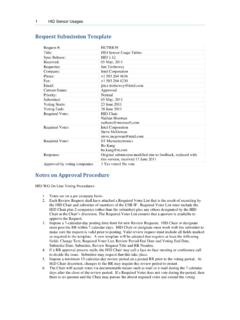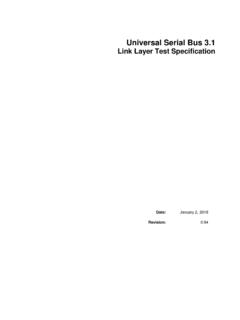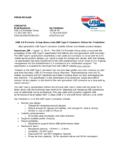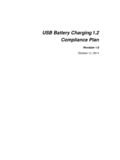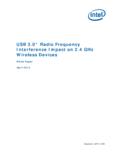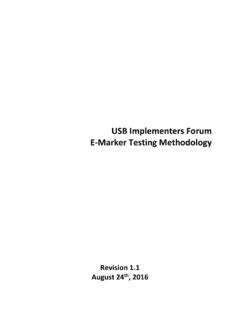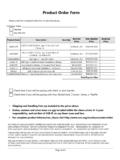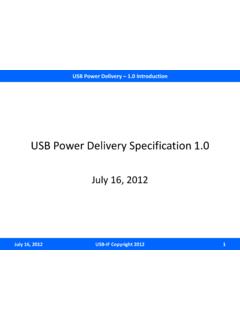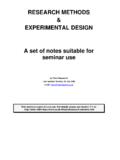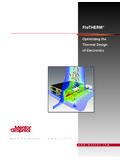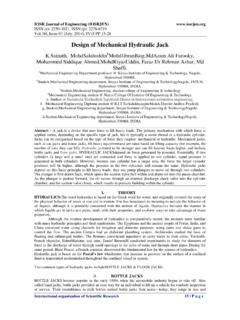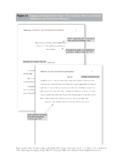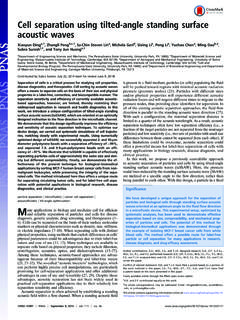Transcription of High Speed USB Platform Design Guidelines
1 High Speed USB Platform DesignGuidelinesRev. Speed USB Platform Design GuidelinesPage 24/26/01 REVISION HISTORYR evisionRevision "THIS SPECIFICATION [DOCUMENT] IS PROVIDED "AS IS" WITH NO WARRANTIESWHATSOEVER, INCLUDING ANY WARRANTY OF MERCHANTABILITY,NONINFRINGEMENT, FITNESS FOR ANY PARTICULAR PURPOSE, OR ANY WARRANTYOTHERWISE ARISING OUT OF ANY PROPOSAL, SPECIFICATION OR SAMPLE. Inteldisclaims all liability, including liability for infringement of any proprietary rights, relating to use ofinformation in this specification.
2 No license, express or implied, by estoppel or otherwise, to anyintellectual property rights is granted assumes no responsibility for any errors, which may appear in this document. Intel makes nocommitment to update the information contained herein, and may make changes at any time without notice."Copyright 2000-01 Intel Corporation. All rights reserved.* Third-party brands and names are the property of their respective owners. Other product and corporate names may betrademarks of other companies and are only for explanation ant to the owners benefit, without intent to Speed USB Platform Design GuidelinesPage 34/26/01 Table of Contents.
3 1 Background_____42 Terminology_____53 Layout General Routing and High Speed USB Trace High Speed USB High Speed USB Trace Length High Speed USB Trace Length Plane Splits, Voids and Cut-Outs (Anti-Etch) Layer Component Poor Routing Techniques_____95 EMI/ESD EMI - Common Mode ESD_____126 Front Panel Motherboard/PCB Mating Front Panel Connector Card_____147 High Speed USB Design Checklist_____17 High Speed USB Platform Design GuidelinesPage 44/26/011 IntroductionThis document provides Guidelines for integrating a discrete high Speed USB host controller onto a four-layer desktop motherboard.
4 The material covered can be broken into three main categories: Board designguidelines, EMI/ESD Guidelines and front panel USB Guidelines . Section Background provides anexplanation of the routing experiments and testing performed to validate the feasibility of 480 Megabits persecond on an actual motherboard. Section 7 contains a Design checklist that lists each designrecommendation described in this document. High Speed USB operation is described in the USB ( ).Board Design guidelinesSpecific requirements concerning routing and placement of the host controller recommended traceseparation, termination placement requirements and overall trace length Guidelines are provided.
5 These arefollowed by general Guidelines concerning plane splits, layer stackup and component placement. Someexamples of common routing mistakes are also included to show the designer some suggestions aboutwhat to avoid when routing USB guidelinesEMI and ESD solutions are provided based on actual motherboard panel USB guidelinesRecommendations are made for front panel cabling, motherboard mating connector pin-out, routingconsiderations and daughterboard Design Guidelines . These Guidelines are based on simulations as well asexperimental testing and BackgroundA variety of placement and routing options were investigated using high Speed USB test silicon placed ona four-layer motherboard.
6 This testing was performed to determine the feasibility of routing 480 Megabitsper second high Speed USB signals on a real motherboard using normal component placement, densitiesand routing ConstraintsThe routing of the Processor/Memory bus and PCI buses with today s chipsets does not leave manydegrees of freedom for other motherboard signals as shown in Figure 1 Major buses on current motherboardsA high Speed USB host controller will attach to the PCI bus, and signals must be routed to the USBconnectors.
7 The high Speed USB validation motherboard examined two candidate placement positions andtwo routing scenarios, as shown in Figure 2. The long route was chosen to use the path currently used by Memory Processor and its power source Audio N S Legacy IDE + Floppy Audio Serial Parallel USB Mouse IN/OUT +LAN + KbdPCI AGP High Speed USB Platform Design GuidelinesPage 54/26/01most motherboards. The short route was chosen for comparison of routing lengths and via counts as wellas proximity to high- Speed interfaces like AGP.
8 Both routes included common mode choke stuffingoptions near the USB back panel connectors to examine the effectiveness of possible EMI and ESDsolutions. Some designs will additionally require front/side panel mount USB connectors , and this istypically implemented with center stake pins and a front panel RouteShort RouteFigure 2 Motherboard placement and routing optionsThe ResultsSignal quality measurements, impedance measurements and EMI/ESD testing were performed using bothrouting scenarios to investigate the effects of vias, trace length.
9 Component placement and routing routing scenarios passed all following the Guidelines in this document, either placement location should produce a successful high- Speed USB-ready TerminologyClock- Any periodic signal (as defined for EMC purposes) above Printed circuit boardEMC- Electromagnetic Compatibility-The condition which prevails when electronic equipment/systemsare collectively performing their individually designed functions in a common electromagnetic environmentwithout causing or suffering unacceptable degradation due to EMI to or from other electronicequipment/systems in the same environment.
10 EMC can be broken down to two major subcategories,emissions and immunity , with ESD being a subcategory of Electromagnetic Interference-The opposite condition of EMC in which a piece of ITE causes orsuffers unacceptable degradation to or from other electronic equipment in the same Electrostatic dischargeHS- High Speed - USB signaling at 480 Mega bits per secondFS- Full Speed - USB signaling at 12 Mega bits per second3 Layout GuidelinesMotherboardPCI SLOTLANRJ45/2xUSBC onnectorFront panelheader optionPCI SLOTPCI SLOTPCI SLOTS outh BridgeNEC test
